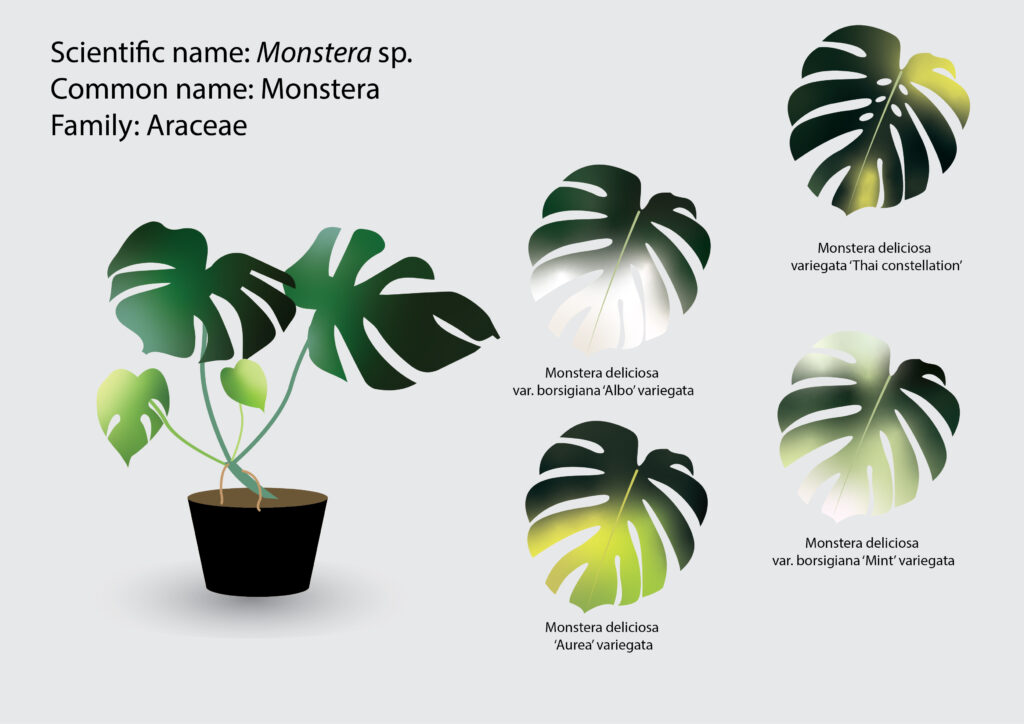Monstera is one of the most popular ornamental plants. It is famous and increasingly on demand because of the beauty of its big leaves. Monstera that is scientifically known as Monstera sp. is a genus of twenty-five species. Furthermore, it is native to tropical America and the West Indies. Most of the house plant lovers keep this plant on their list apart from Philodendron. Like Philodendron, it is a very large evergreen tropical climber that usually supports and cling itself with long aerial roots and often epiphytic. Therefore, it is always finding that monstera behaves as a climber that is cling on the tree.
Monstera has a unique common name that is swiss cheese plant. This is because it has two forms of foliage, which are juvenile and adult. The juvenile form is usually much smaller and usually growing flat to the trunk of the host plant without much-defined pattern. On the other hand, adult leaves are much larger and often perforated to allow the distinct identification among varieties and species.
Monstera is a flowering plant that produces flower spikes enclosed in a spathe to eight inches long. The flower is shed, and its color is usually white or greenish cream. It does produce fruits that have similar color, which is the white color when they are mature. Moreover, the fruits of certain species are edible.
Since it is one of the most popular indoor plants, it requires minimal horticultural practice. They grow well in shaded or part-shade area with moist, humus-rich, and well-drained soil. In tropical countries, they can be rise to seventy feet or more and control by pruning. Since it produces fruits through pollination, its seeds are used for germination into seedlings. However, it is propagated through cutting most of the time.
Out of so many species, there is a monstera, namely Monstera deliciosa, a close relative of Philodendron, which is native to the West Indies and tropical America. It is commonly known as a fruit salad plant, swiss cheese plant, or split-leaf Philodendron due to its vast, broad, glossy, perforated, as well as deeply cut leaves that grow from thick stems with aerial roots. The mature plants bear thick and cream spathes followed by sweet-smelling cones with edible fruits about a year to ripen. The maturation of the fruit usually observed when the monstera is planted outdoor. It is easy to grow like other Philodendron species that can adjust to all kinds of conditions, but it’s recommended to avoid the coldest indoor conditions below 50F.
The mature leaves of the monstera are the distinct feature that differentiates the price from them. The lobes, the perforated pattern, as well as the variegation are the keys to bringing the price of a monstera to the next level. Due to the instability of the variegation and only some of the leaves show different variegation and some do not, it is pretty challenging to maintain its price and value at a certain level. This is because variegation would be affected by abiotic factors like weather and fertilizer application in an appropriate ratio. However, it is proven that some variegations are determined through genetic contents. Due to the nature of the dual forms of leaves in the juvenile and adult stage, most monstera only tells their values at an adult stage when the leaf structure and colors are exhibited.
